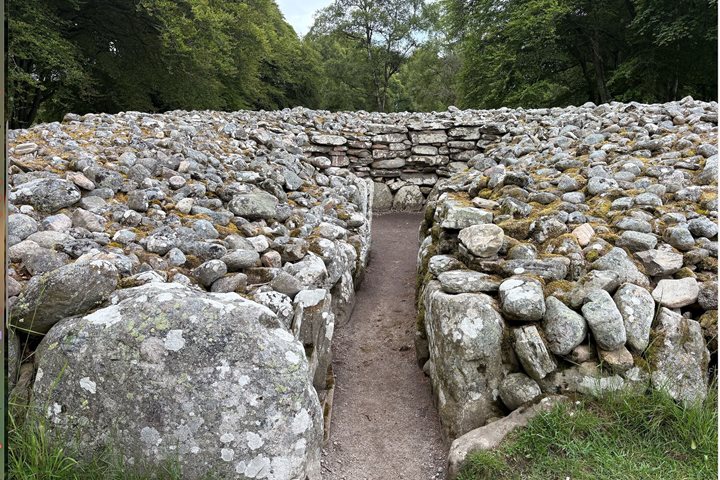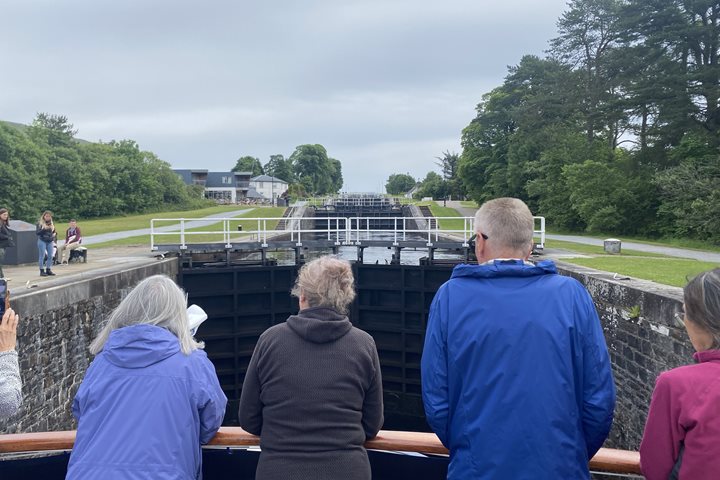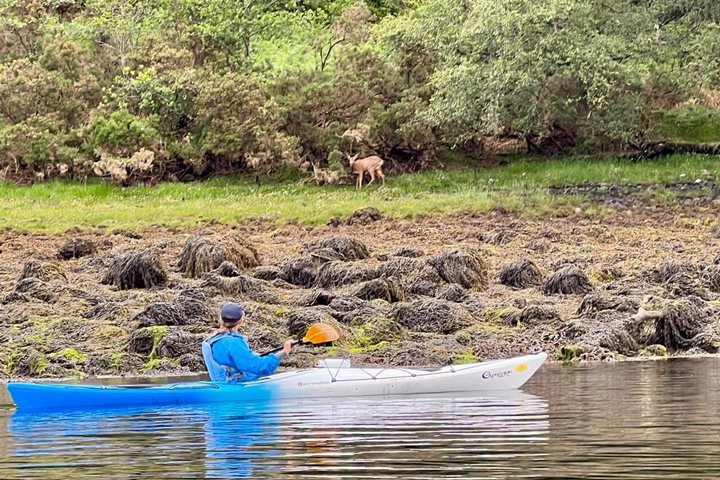We sailed early this morning from Tobermory to the port at Craignure, eastward along the island of Mull. We took a scenic bus ride along a narrow and winding road to the small village of Fionnphort; there we caught the ferry to the historic and spiritual island of Iona. The weather gods were thankfully on our side, and we enjoyed beautiful sunny conditions while exploring the nunnery and famous 13th-century abbey. The island has a rich archeological landscape for photography, and our local guide informed us about Iona’s role as the birthplace of Christianity in Scotland. In the afternoon we retraced our ferry and bus journey to visit the seat of the MacLean Clan at Duart Castle; it dates to the 13th century and has been progressively renovated and restored since 1912.
6/15/2025
Read
Lord of the Glens
Loch Ness, Culloden and Clava Cairns
Today we entered the famous Loch Ness, home of Nessie! We then visited the hallowed Scots battle ground of Culloden. On April 16, 1746, Bonnie Prince Charlie and his highland troops fought a courageous but doomed battle against the well-armed troops under the Duke of Cumberland, the son of King George II. Fifteen thousand highlanders were killed, while the English lost 300. Culloden Moor was soddened from a recent rain, which greatly impeded the highland troops and their traditional form of warfare. Additionally, they were massively outgunned by the English artillery. Bonnie Prince Charlie managed to escape despite a £30,000 bounty on his head, and he returned to France. This ended the Jacobite efforts to return the throne to the rightful Stuart heirs. The Culloden Museum was excellent and provided an overview of the tragic event that took place there. We next visited the Bronze age site of Clava Cairns. There circular stone grave sites, passage graves, and standing stone aligned to the solstice are 4,500 years-old and part of the megalithic culture from Malta to Shetland. They have been used by the local population for ritual purposes and infrequent burials until 700 CE.







